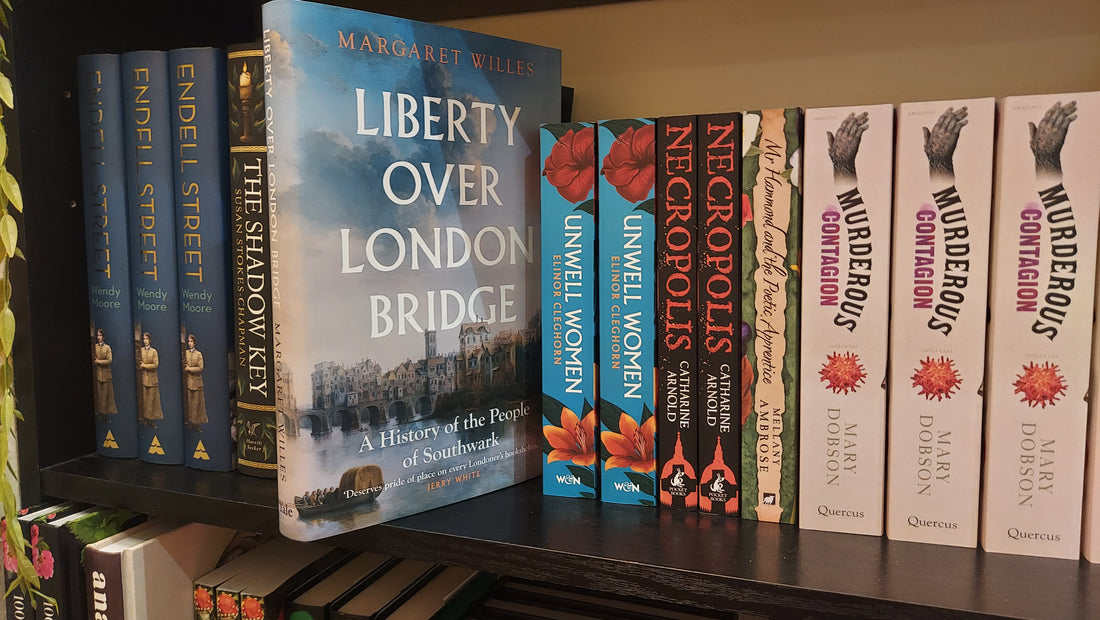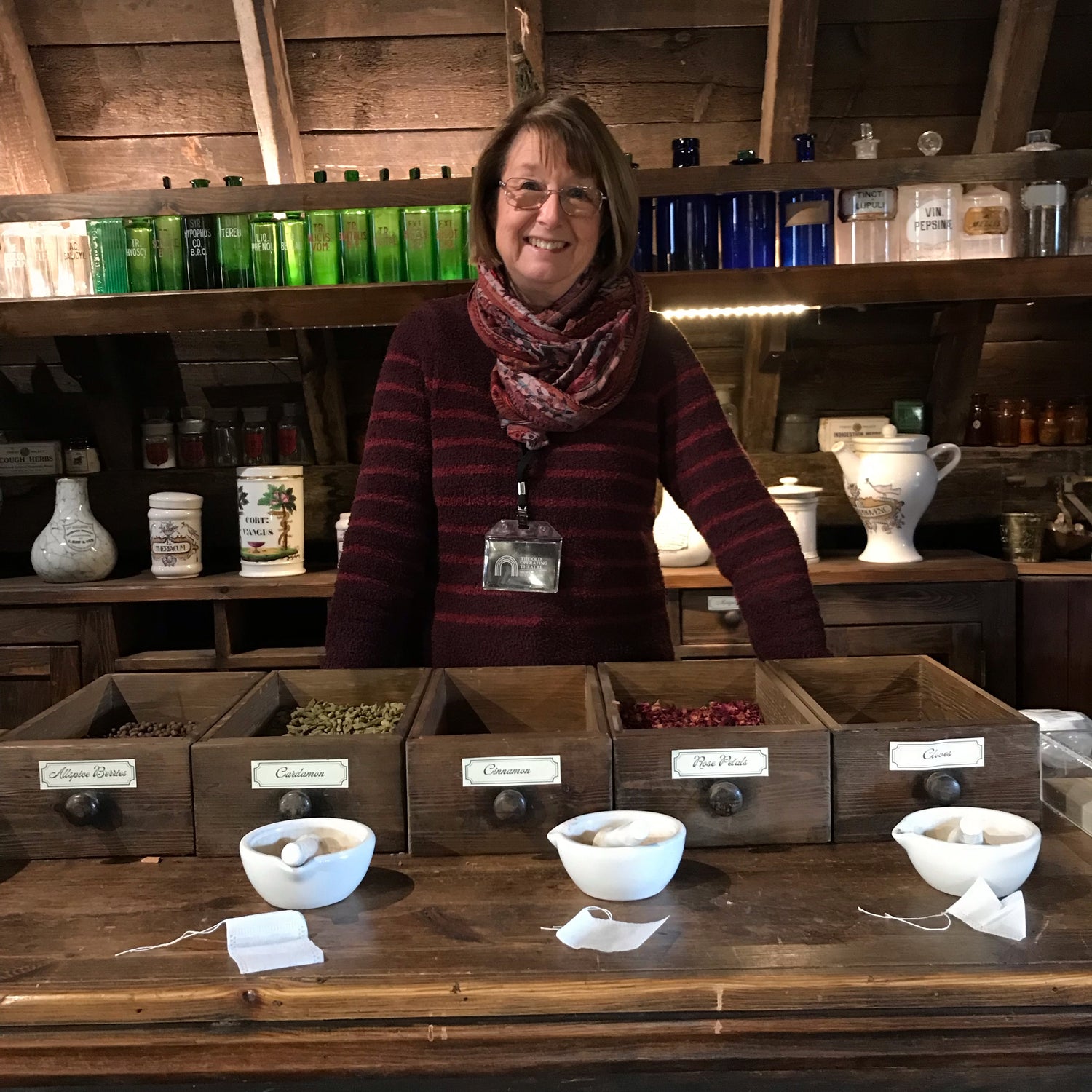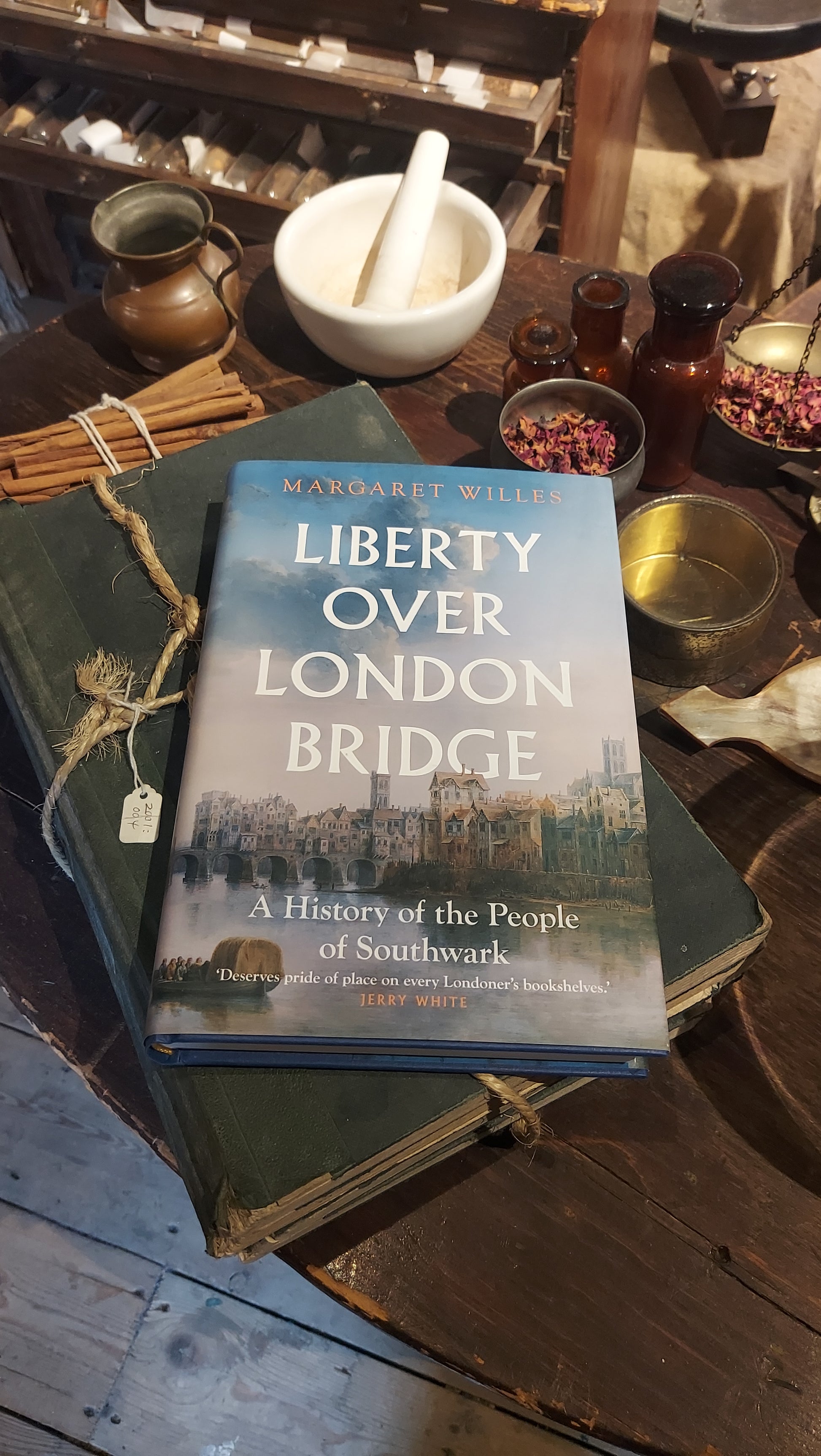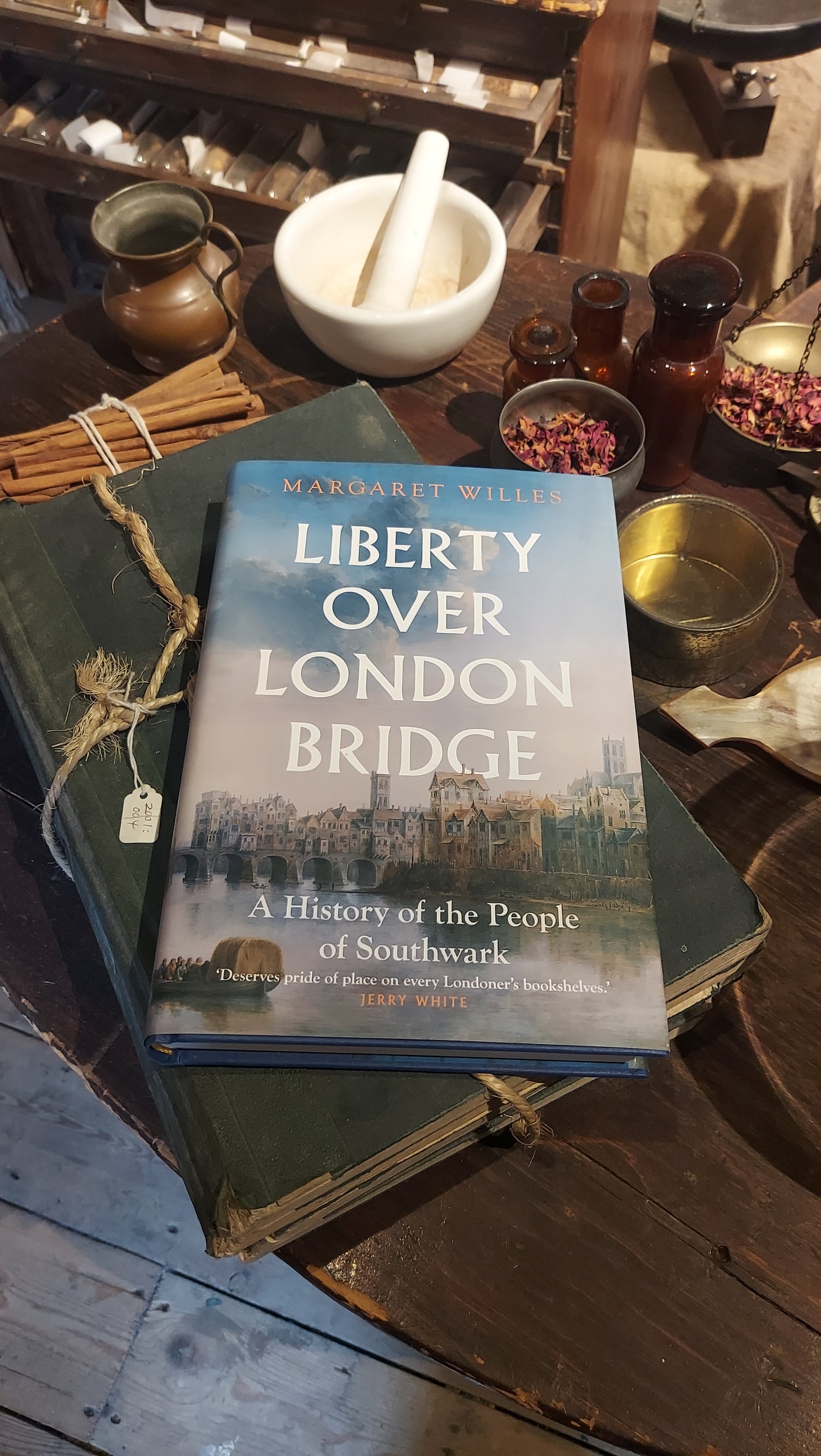Each month we review a book from Mildred's extensive library. This month's book is Liberty over London Bridge: A History of the People of Southwark by Margaret Willes, reviewed by Sue, one of our very knowledgeable volunteers.
A part of London often historically ignored, Southwark has a rich history dating back over 2,000 years. Margaret Willes has written an eminently readable, and meticulously researched book covering the history and characters of the ‘Borough’, once a marshy area dotted with gravel islands. Since Roman times, it has been a place of transit, with what is now Borough High Street being the road from the South Coast to London Bridge. Willes describes the coaching inns, taverns and ale houses, important places not only for those arriving in London but also for those medieval pilgrims starting their journey to Canterbury. Geoffrey Chaucer has his pilgrims set off from the Tabard Inn. In 1350, there were 27 properties who were purveyors of drink and 200 years later the number was likely to be nearer 40.
The ‘Liberty’ relates to Southwark’s position outside the jurisdiction of the City of London, whose Corporation had strict laws forbidding theatres, brothels, bear baiting, and cock fighting within London’s walls. So enterprising men and women set up businesses just across the river in Southwark, easily accessible by the taxis of the day, watermen’s boats, and the area became the playground of the City. Willes describes how the brothels were licensed by the Bishop of Winchester, on whose land they stood, and hence the sex workers came to be known as Winchester Geese. The theatres of Southwark, the Rose, Swan and the Globe are legendary with managers such as Phillip Henslowe, actor Edward Alleyn and actor/playwrights Marlow and Shakespeare, but Willes also outlines the lives of lesser known people associated with entertainment in Southwark, including a brothel keeper.
Although on face value Southwark seems a seedy place, Willes describes how by the late medieval period it was one of the wealthiest towns in England. There were industries including printing presses – the first bible in English was printed near St Thomas’s Street – and the area also produced some of the finest late medieval stained glass. There were well known breweries, with hops brought from Kent, tanneries with associated leatherwork and glove-making industry in Bermondsey, and of course trade from the docks. In 1444 a Royal Charter for an annual Fair was granted by Henry VI; Willes describes its checkered history, and its eventual metamorphosis into the present day Borough Market.
The coming of the railway to Southwark in 1836 proved the death knell of the old coaching inns, as more people and goods travelled from Kent into London Bridge Station. Willes describes the seismic effect the railways had on the area, which also led to the local hospital of St Thomas having its land compulsorily purchased to expand the station and build the viaduct to Charing Cross, thereby causing the hospital to be relocated from the site it had occupied for 650 years.
The chapter on medical matters charts the history of St Thomas’s Hospital, first on the site of what is now Southwark Cathedral; its move after a devastating fire to the other side of Borough High Street as ‘the air was sweeter’; its monastic beginnings in the 11th century, its end in 1540, and its rebirth as a secular institution under the auspices of the Corporation of London in 1552. Willes relates many stories of the monks, benefactors, apothecaries, doctors and nurses, and, after the foundation of the new Guy’s Hospital in the mid 18th century, the ill feeling between the medics of St Thomas’s and Guys.
Willes brings the history of Southwark up to the present day with the founding of the new Diocese of Southwark, the Church of St Mary Overie’s elevation to a cathedral in the early 20th century, the astonishing post-war regeneration of the area, including the building of The Globe, and the Tate Modern, and the horror of the 2020 terrorist attack.
Many of the characters Willes describes have memorials in Southwark Cathedral, which has been the hub of Southwark for over a 1,000 years. This book fleshes out their lives and times, and provides a colourful backdrop to present-day Southwark, putting in context everything you see today. For anyone interested in the history of London, this book is a must read.
Sue Simpson




